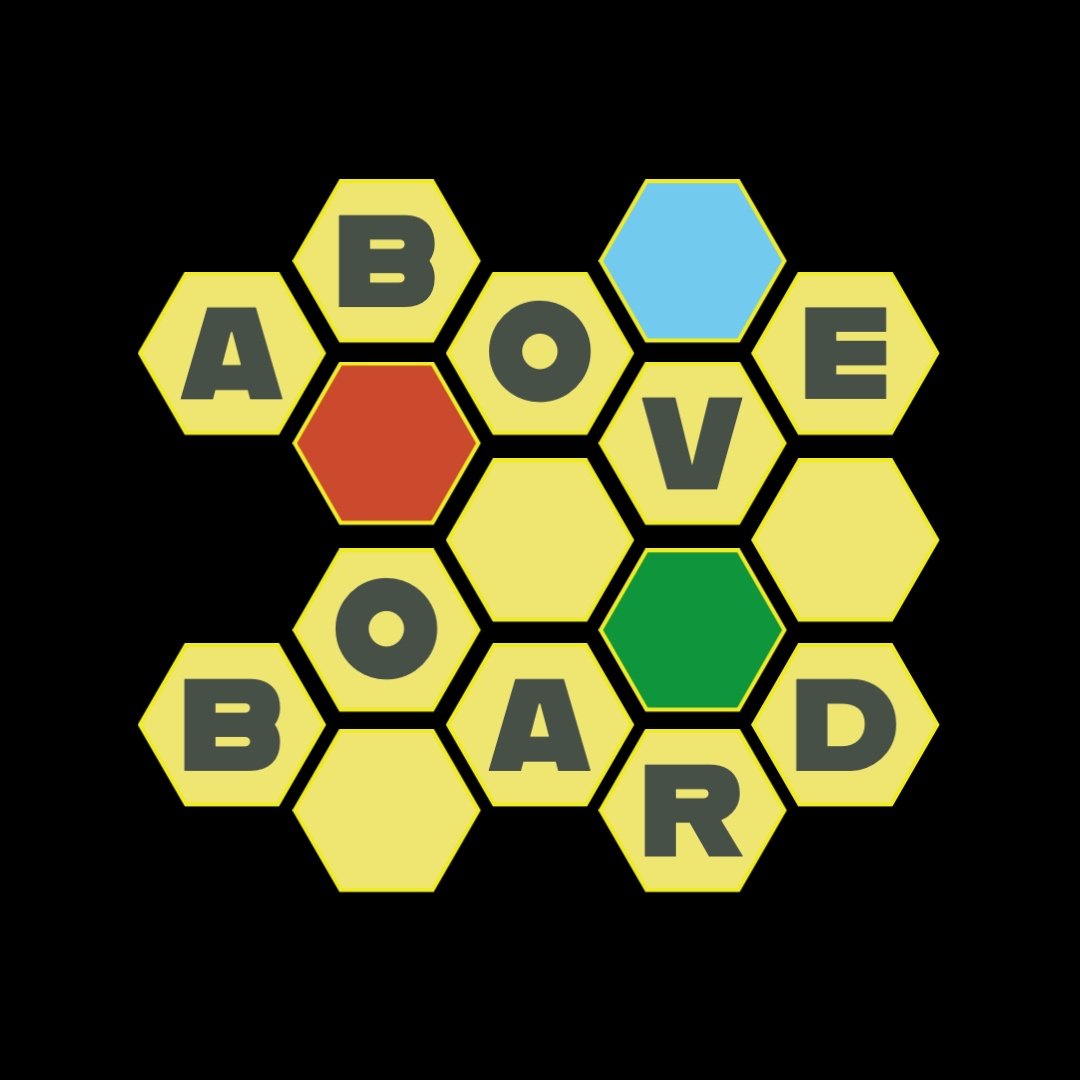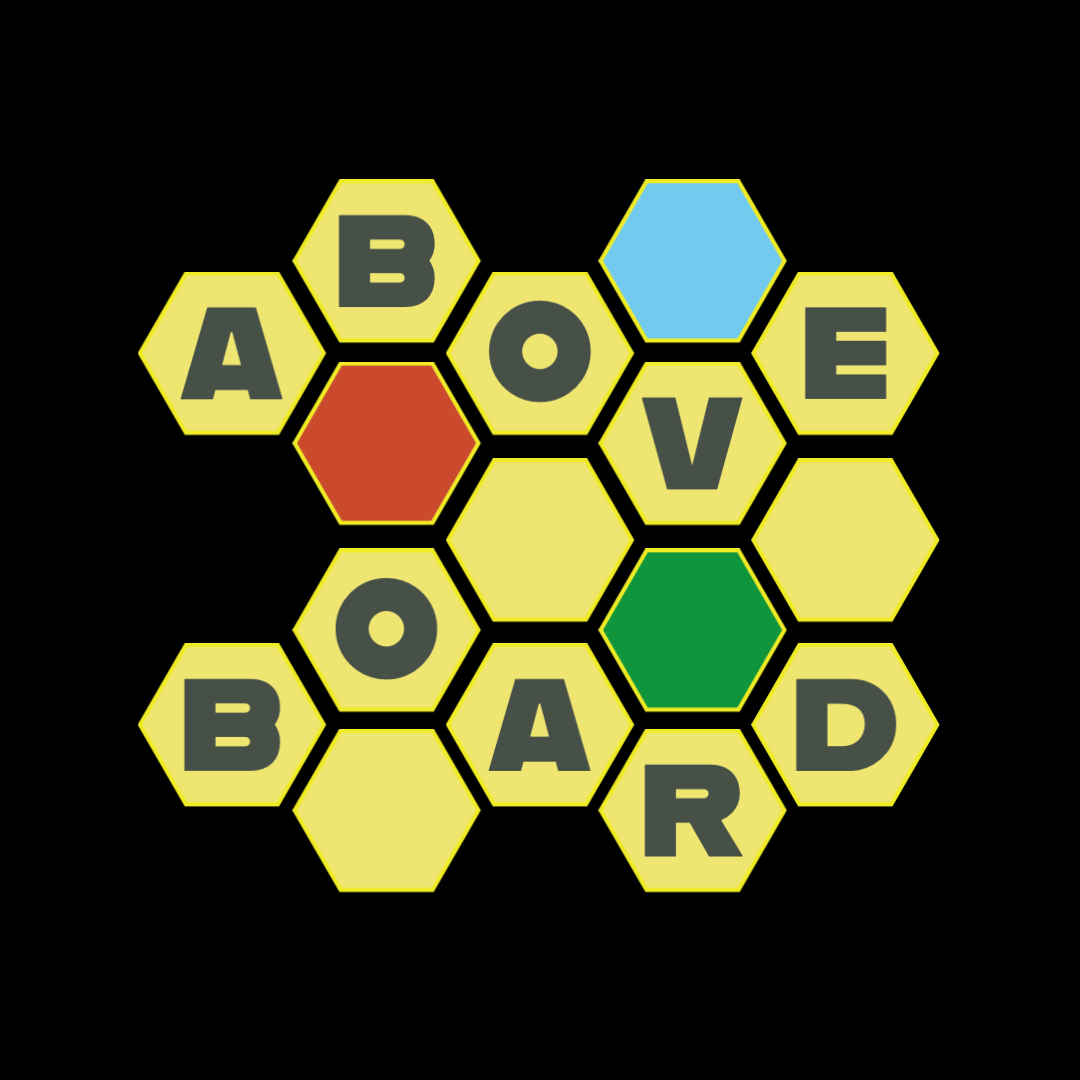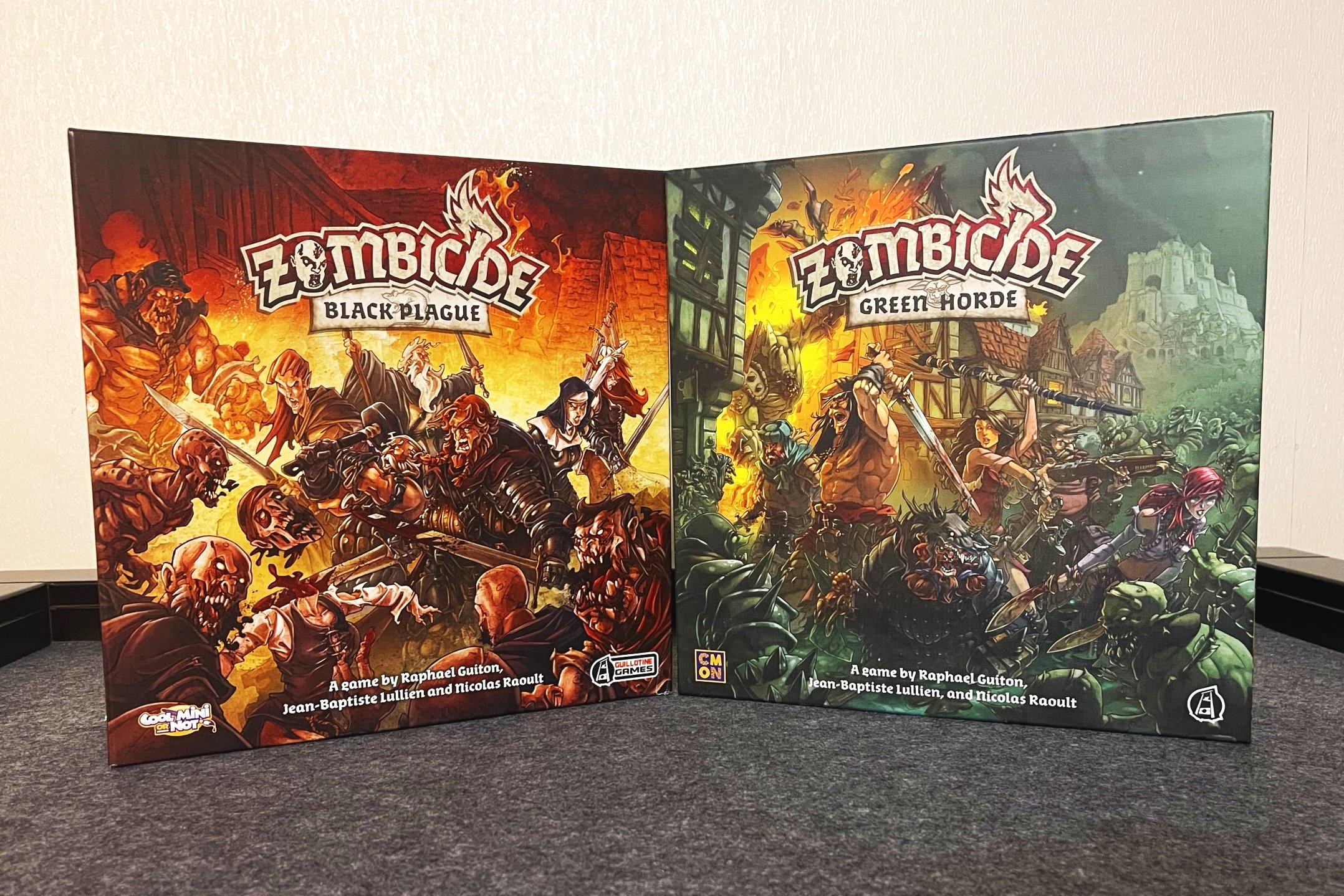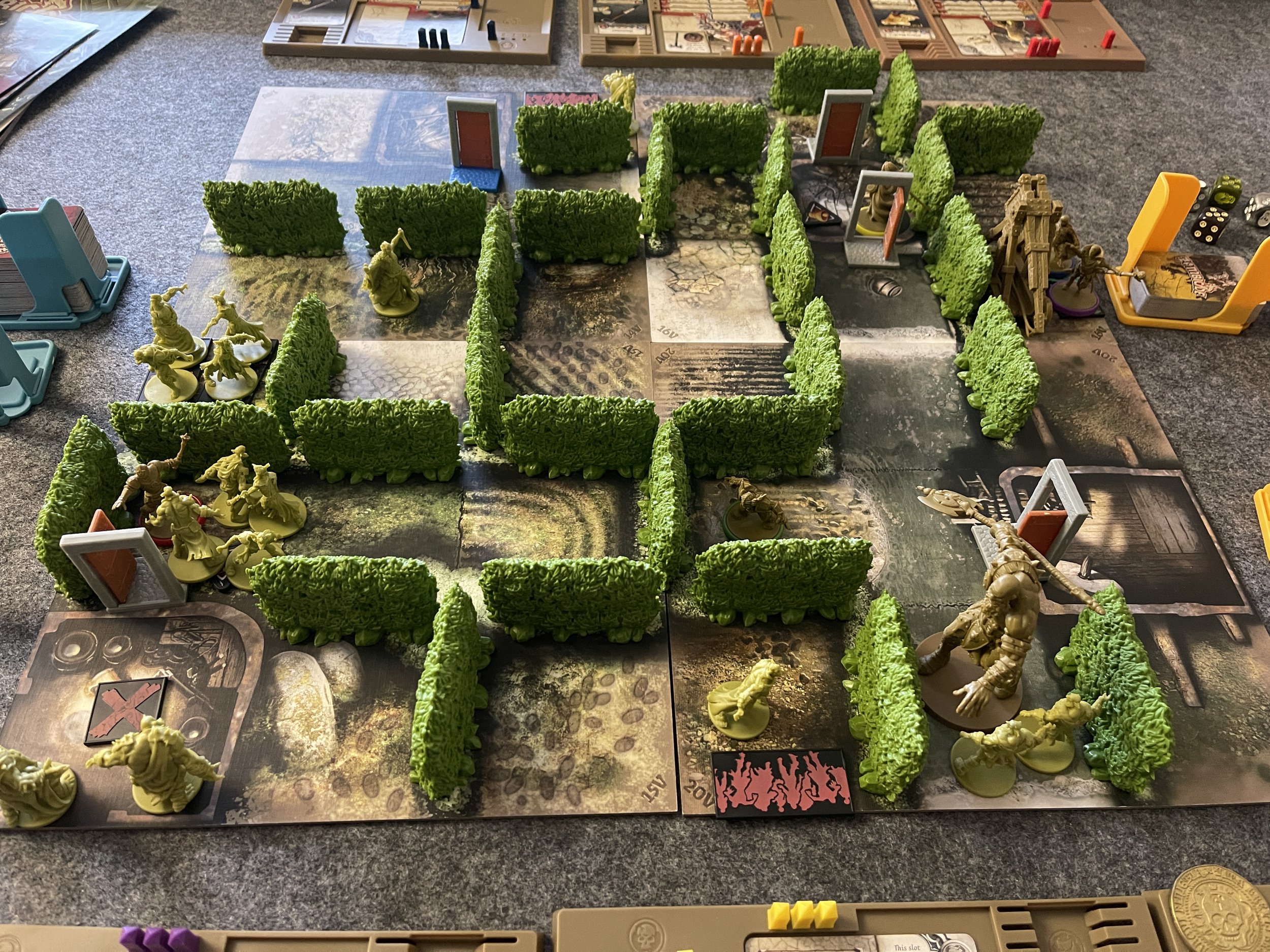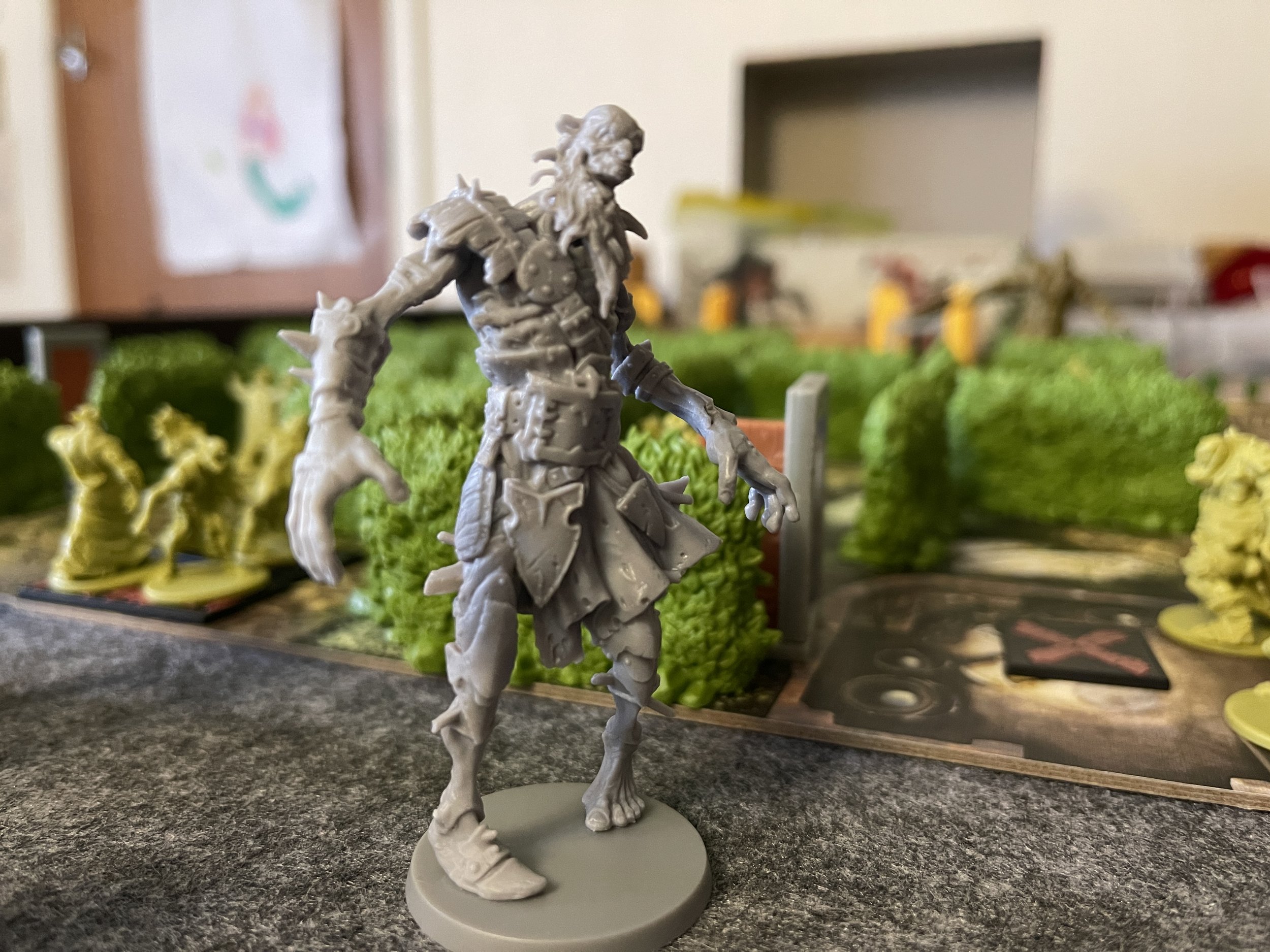Zombicide: Black Plague & Green Horde Review
Like a slow, shambling zombie, this review finally lurches into the open looking for unsuspecting readers to peck their braaiiiins.
That’s right, you didn’t misread the title, this isn’t a review of Zombicide 2nd Edition, or Marvel Zombies, or that cowboy one, heck, this isn’t even review of the space one, nope, I’m reviewing Zombicide: Green Horde, and, by extension Black Plague, which are, in my humble experience, collectively the best version of Zombicide I’ve played to date. That’s not to say it doesn’t have its share of issues, and I’ll get to those in due course, but I wanted to begin by bringing some attention back to this amazing dice chucker.
For those unfamiliar with CMON’s Zombicide series, it’s essentially a miniatures heavy zombie apocalypse game for 1-6+ survivors with varying skill sets exploring a modular tile board. Most scenarios have the characters seeking out objectives and equipment while battling increasing hordes of zombies each round until either the objectives are complete and the players win the game, or, they don’t. Typically of most CMON games, the focus is heavily on the miniatures and the accessible gameplay wrapped in an instantly recognisable theme to catch the eye and draw in players.
The series began with the original Zombicide which took place in present day urban environments and was heavily influenced by popular series such as The Walking Dead (back when people still watched that) and other genre staples such as Shaun of the Dead and pretty much anything by George Romero. The game proved so popular that it not only set the stage for CMON’s Kickstarter focused business model but eventually resulted in several updates and sequels to the Zombicide formula. Zombicide Black Plague was the next full title after the original and appealed to many players due to its medieval fantasy theme and its welcome rule updates which players felt solved many of the problems they had with the original game. So popular was Black Plague in fact that CMON saw fit to expand this setting with the follow up, Zombicide: Green Horde, which switched the focus from the traditional human zombies to zombified orcs, goblins, trolls and other fantastical creatures. This opened up the door to far more imaginative abominations as well. Abominations being the large, monstrous boss zombies that players dread to see on the board and are difficult to bring down without the proper armaments.
While the series found great success (Borat voice!) beyond the dark fantasy setting, it was this version in particular that players talked about so much and seemed to use as the yard stick by which to measure future Zombicide titles. As such, when considering which version to discuss in this review, I quickly settled on Green Horde due to its relative popularity among players and its stamina in a crowded market of miniatures-heavy dice rolling games. To begin with, the rules are simple and can be easily summed up to new players in a couple of sentences to get people started. “We’re fighting off zombies, trying to complete objectives and you get three actions per round, usually moving, attacking or searching.” And from there, you select your scenario, choose your characters and you’re away! I can’t tell you what a relief is it to set up and game and be into the action within a few minutes. More often nowadays, board games are becoming increasingly niche and in many cases, needlessly complicated. It’s not unusual to have hundreds of components and a rulebook thick enough to make The Lord of the Rings sweat and then spend an hour detailing the game to your group or watching Rodney Smith explain it to you in his dulcet Canadian tones before you can even begin. There are times when I absolutely want to play a heavier game and I don’t mind taking the time in those cases, but sometimes I just want to play a game right now, and Zombicide Green Horde is one of my go-to’s.
Since the Green Horde and Black Plague versions of Zombicide share the same setting, all of the content from these titles can be mixed and matched to the players’ preference and while it’s certainly not necessary to own both titles, having the extra characters, creatures and equipment to choose from is always welcome. The customisability of Zombicide means you can have a unique experience each time by simply swapping out a few cards in the spawn and search decks.
There are several additions Black Plague/Green Horde make to the traditional Zombicide formula, including updated targeting rules (making ranged combat more forgiving if there’s a friendly character in the mix), new rules for hedges, barricades and water and new elevated positions which affect range and line of sight. Each of these represent gentle tweaks to a fairly basic system but may be enough to add new strategic elements for groups who enjoy putting a little more thought into their indiscriminate zombie carnage.
Most games of Zombicide start with players feeling quietly optimistic about their chances, a nice empty game board with nary a zombie in sight and the starting equipment feels sufficient, so off the character skip, merrily on their way to the first objective. Fast forward a few rounds and now some players have disposed of enough zombies to progress their experience bar into the orange, while one or two conservative players are still languishing back in the lower blue. What does this mean exactly? In Zombicide, spawn cards are drawn during every zombie phase for each of the multiple spawn points in the scenario. The number or severity of zombies that appear depends on the highest current experience level of the characters which begins at blue, then increases through yellow, then orange and finally, red. This steadily escalating level ensures players are always sufficiently challenged even as they acquire more powerful skills and equipment. It can also means the game doesn’t give one undead hoot if some characters are still floundering in the lower experience zones. Too bad, shoulda killed more!
Speaking of killing more zombies… I haven’t yet discussed the biggest addition Green Horde brings to the gameplay; the Green Horde itself! Most of the cards drawn from the spawn deck include an Assemble the Horde condition, which means that whichever variation of zombie spawns at that site also spawns another single zombie of that type in the Horde area which is removed from the main play area. This continues, gradually amassing what can, at times, be a sizeable group of enemies. If a card declares Enter the Horde, then enter it shall, and every mini that has accumulated in the horde area appears on that single spawn point, this can take a situation from we-got-this to we-never-had-this very quickly indeed. Thankfully the the game provides an answer to the Horde too….
Introducing, the catapult! That’s right, Zombicide Green Horde has a siege weapon! This catapult can be manned by one or more survivors and is used to fling one of three different ammo types toward a group of zombies that are at least 2 zones away on any exterior space on the board. This could be a scattershot type projectile useful for clearing large numbers of weaker enemies, to a single boulder, ideal for taking down a monstrous abomination. The trade off is that firing it once requires all three of a survivor’s actions. Doing so can leave an unprotected character vulnerable, not to mention splitting the party (a tried and true no-no for most cooperative games) and result in less players on the field to locate and secure objectives. Even so, the catapult provides a welcome taste of hope to what could prove to be a bitter zombie porridge.
The fully co-op nature of the game means the stronger characters should ideally be looking out for the weaker ones, but this brings me to one of my gripes about the system. Sometimes certain characters just can’t keep up. This may not be through any fault of their own, perhaps a series of unlucky combat rolls meant they weren’t able to put down enough zombies, or maybe they were busy securing the objectives for the group while others were just having fun keeping the zombies at bay. Ideally the game would self correct if you had a group of players who looked out for one another by ensuring the necessary cover, so in that regard, it feels appropriately thematic that a group of individuals, despite needing to stick together for survival, may still not make the best decisions and leave weaker members behind. Likewise, less capable characters may find clever ways to leverage others’ strength to their advantage. So in that sense, I suppose it works.
A big appeal of the Zombicide franchise is that there is something for everyone. You like the Old West? They’ve got you covered. Prefer a little sci-fi in your zombie game? Then Zombicide Invader is the one for you. Big Marvel fan?… Well, if you can afford your own shipping container, and a second mortgage then sure, why not? But if good old inoffensive sword and sorcery is your bag (of holding), then Green Horde is going to tick more than a few boxes for you. I’ll happily play any entry in the franchise, but Black Plague and Green Horde are the ones I’ve chosen to represent them in my collection.
Do you have a favourite entry in the series? Share your thoughts on Zombicide in the comments below and be sure to join Above Board’s Facebook group to keep up to date with future content announcements. Thanks for joining me and I’ll see you next time.
By purchasing your own copy Zombicide: Green Horde or Zombicide: Black Plague here you help support Above Board to keep bringing you more great content! Thank you.
